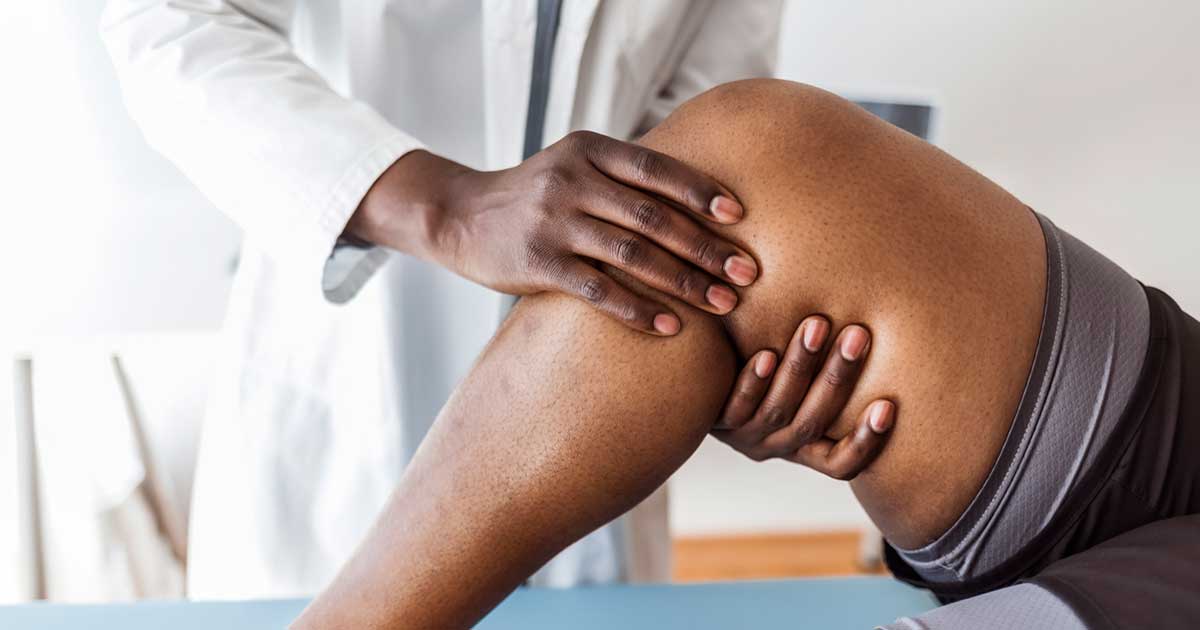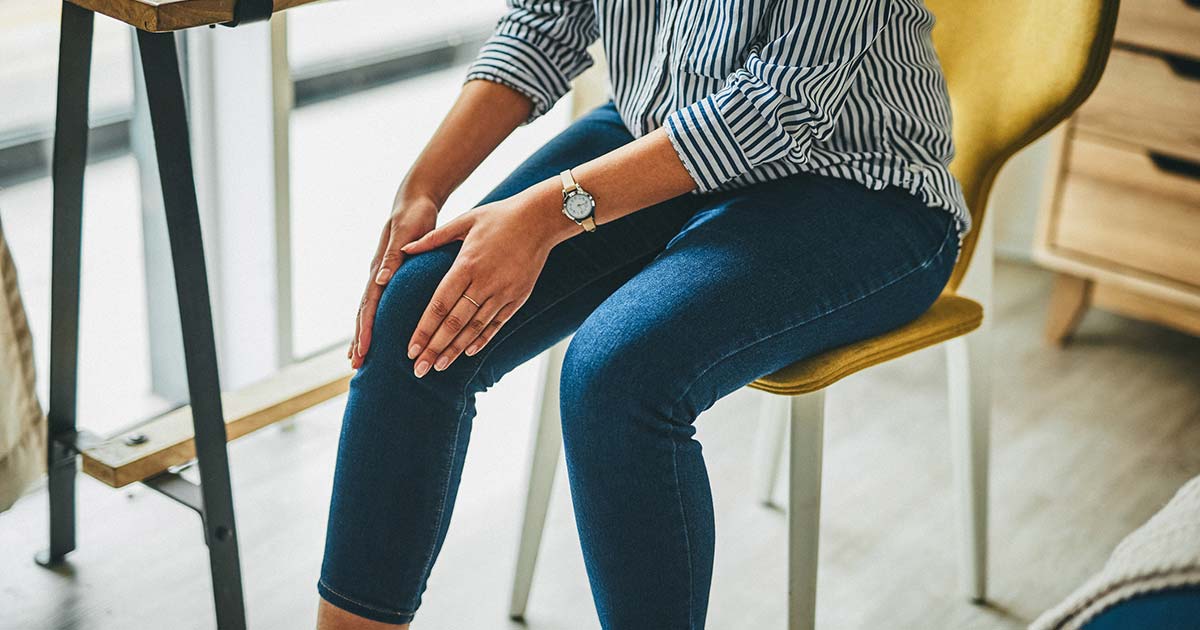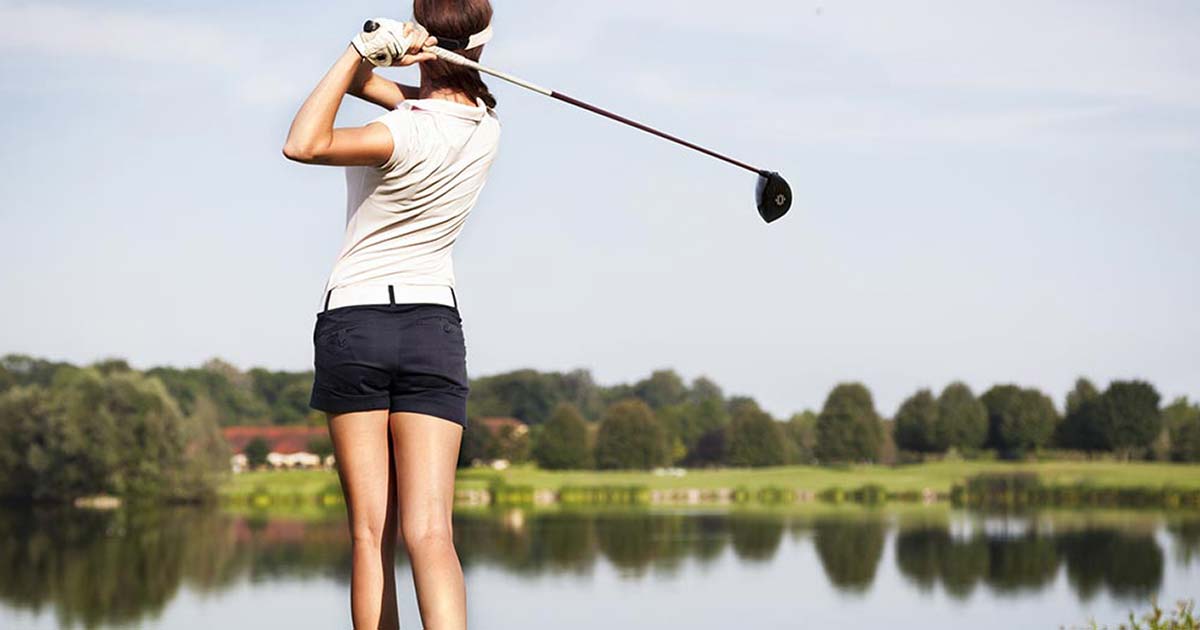What to Know About Golf After Knee Replacement or Injury
Advice to improve your movement, fitness, and overall health from the world #1 in orthopedics.
As the largest joint in the body, the knee is vital not only to your golf game but also to your daily life. While the knees are built to withstand all kinds of stresses, one wrong move can cause serious damage. Knee injuries aren’t common in golf, but they do occur, and engaging in the sport may aggravate existing knee problems. The good news is that you can take measures to protect your knees from any strain related to golf.

First, it helps to understand the basic anatomy of the knee. Three bones meet to form the knee joint: the thigh bone (femur), shin bone (tibia) and kneecap (patella). The kneecap sits in front of the joint and provides protection.
Several muscles are critical to knee function. The two most important are the quadriceps, located in the front of the thigh, and the hamstrings, in the back of the thigh. The quadriceps are called into action when we want to straighten our knee (called knee extension), while the hamstring muscles enable us to bend our knee (knee flexion). During golf, muscles across the knees and hips are used to generate forces from the ground up and deliver rotational power to your swing.
There are also several ligaments that connect the thigh bone to the shin bone to stabilize the joint, including the anterior cruciate ligament (ACL), posterior cruciate ligament (PCL), medial collateral ligament and lateral collateral ligament. The ACL and PCL cross each other within the joint to keep the shin bone in place, controlling its forward and backward motion. The collateral ligaments run down each side of the knee, controlling side-to-side movement and stabilizing the knee. If you’ve had an injury to any of these structures, you may benefit from some modifications to your golf game to keep yourself pain free.
Golf after Knee Replacement
If you’ve had a knee replacement, or if you’re dealing with osteoarthritis of the knee, a few straightforward adjustments will allow you to keep playing with less pain. The primary rule? Use pain as your guide. If it hurts, don’t do it. Also be sure to check with your doctor if you’re returning to the game following a knee replacement surgery. Other tips:
- Minimize stiffness and maintain strength by performing gentle mobility exercises and low-level resistance exercises before and after the round. Examples include pelvic tilts, golfer-stance thoracic spine rotations and stork turns. These exercises attempt to mobilize the areas above and below the knee to reduce stress on the knee joint during the golf swing. Strengthening exercises for the hip muscles, such as monster walks, hip clocks and bridging, help create power and stability in the golf swing.
- Use a golf cart when initially returning to the game and slowly progress to include more walking between holes, depending on the course. Map out a plan prior to teeing off.
- Start off with short shots like chipping and putting until you feel more comfortable and confident in what your body can handle. Be aware of how you’re feeling.
- Staying as close to a classic golf swing as possible will reduce your risk of exacerbating your injury. A more upright stance lessens the amount the knee bends when swinging the club. If you experience some discomfort with your swing, make half or three-quarter swings and limit the amount of time you play. If you wear spikes, use soft-spike golf shoes to reduce the rotational forces on the knees.
- When practicing longer shots, start with 10 and gradually increase the number, always watching for pain and swelling.
- Using short irons will reduce stress on the knees. Longer clubs will allow you to loft the ball easier, but this should be determined on a case-by-case basis, making sure that it does not alter the swing too much. Consider using lighter clubs that have flexible shafts to minimize stress on the knee.
- Right-handed golfers with left-knee arthritis or who have had a left-knee replacement need to use extra caution because their lead leg will take on greater rotational force when they swing their club. Slightly turning your feet outward when swinging will reduce the amount the knee pivots, reducing strain.
- It is important to be cautious of slick surfaces, wet and soft grounds and getting in and out of bunkers to minimize the risk of a fall and increased pressure on the knee.
- Use ice following a round of golf to minimize swelling and pain.
Golf after ACL or Meniscus Injury
For golfers with an injury to the ACL or the meniscus, which is a disc of cartilage between the shin bone and thigh bone that cushions the joint, additional precautions can also help prevent pain, swelling and stiffness after your round.
ACL Injury
The effect on your golf swing is likely to be most significant if the ACL tear is in your lead leg (your left knee for a right-handed swing; right knee for a left-handed swing). As with other knee-related issues, maintaining the strength of your core, hip and thigh muscles, especially on the leading leg, will help control rotation and shear forces around the knee. If your knee is still swollen or has a limited range of motion, avoid prolonged playing or walking. Gradually increase in both time on the leg as well as number of swings (this is known as a functional progression). In addition:
- Use caution on uneven lies, such as climbing in and out of a sand trap. Enter and exit a bunker from its lowest, most even side. Downhill lies can be especially troublesome for those with an injury to the ACL of the lead leg.
- Be careful to avoid a large lateral sway during the golf swing, as this may increase rotation and stress on the knee. Use a slightly open stance or rotate your lead leg outward at least 30 degrees along the target line. While this may sacrifice club speed or power, it will result in less pressure on the knee during ball strike and follow-through.
- At the close of your swing, be sure you can hold the position for 20 to 30 seconds without feeling pain or instability.
- Use ice on the knee to reduce swelling and discomfort after a round or after practice. Use a cloth or towel; never put ice directly on the skin.
Meniscus Injury
If you have had meniscus surgery, consider the intensity of your play, your body mechanics and the benefit of targeted exercises prior to returning to the game to decrease your risk of any issues. Be sure you are fully recovered from your injury and get the OK from your physician before you return to golf. Other tips:
- Walking the course, bending down repeatedly to pick up a tee or ball and rotating the knees during the golf swing can all affect the knee. Begin by using a golf cart and progress to walking by adding two holes per round. Use a ball retriever to eliminate the need for deep squatting to retrieve the ball.
- Warm up, including basic exercises and stretching, prior to play.
- Knee pain can increase with longer-distance shots and as a result of rotation forces that occur in the knee. Consider initially clubbing down for shorter-distance strokes, including short irons or pitching wedges, as these are less likely to cause knee pain.
- During setup, rotate your lead leg out to the side 20 to 40 degrees to reduce the amount of twisting and pressure on the knee during the final stages of your swing.
- Using soft spikes may decrease twisting and shearing forces across the knee.
- Use ice following each round for about 20 minutes. Use a towel or cloth; never put ice directly on the skin.
General Tips to Protect Your Knees during Golf
In addition to the tips above, don’t let your knees roll inward in your golf stance. Keep your buttocks back as if sitting into a chair so that your knees don't go further forward than your toes.
Managing playing volume is a critical factor in avoiding overuse injuries or preventing flare-ups when returning to golf after knee surgeries. Hitting many balls when practicing and playing on multiple consecutive days can potentially lead to overload. Make sure to build in proper rest and avoid doing too much too fast.
And of course, if you feel like you may have injured your knee during the game or if you start to have pain, stop playing immediately. If the problem persists, see a doctor.
Published 9/17/2021




